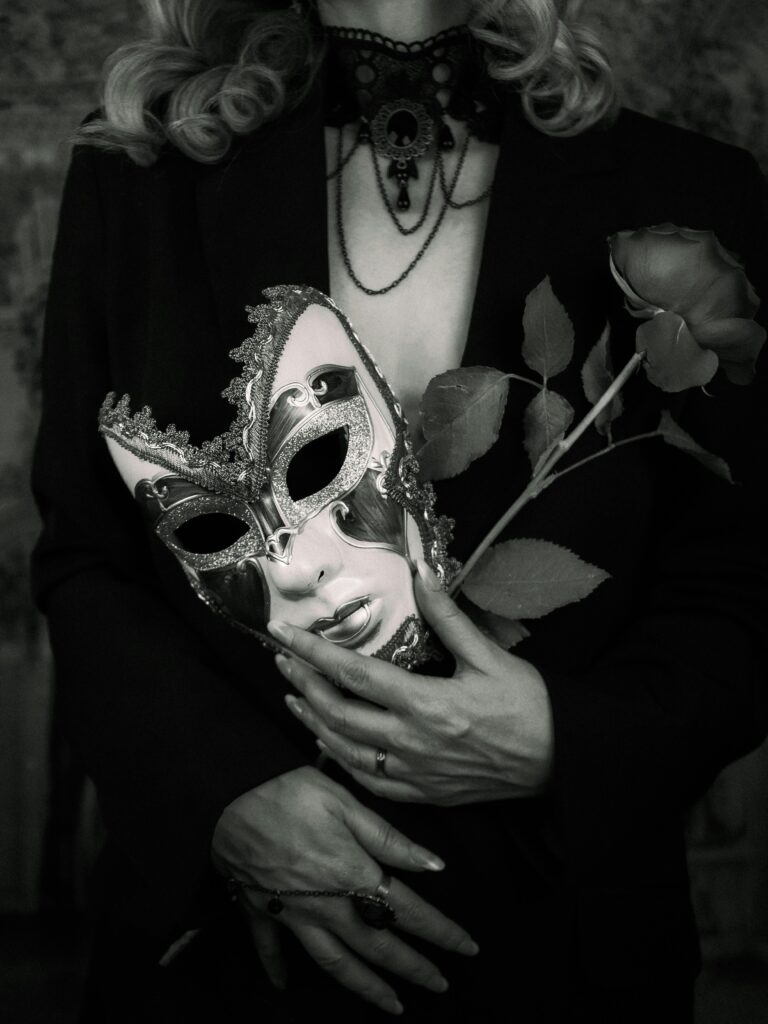When your nervous system collapses after trauma, you don’t need to force yourself back to ‘normal’—you need to learn the language your body is speaking. This is a story about how post-traumatic growth really happens — not as instant strength, but as a slow, embodied process of remembering safety, rebuilding trust in your own system, and leading yourself home. For anyone who’s felt frozen, depleted, or disconnected from who they were — this piece is for you.
There’s a moment I remember with absolute clarity: standing at my front door, hand trembling on the handle, unable to cross the threshold into the ordinary morning light.
My keys were in my hand. My shoes were on. The world outside was waiting—just a normal Tuesday morning, people walking dogs, cars starting, life happening the way it always had.
But I couldn’t move.
Not because I didn’t want to. I wanted to be the kind of person who could just walk out the door without her heart hammering, without her vision tunneling, without every cell in her body screaming DANGER!
But my body—my brilliant, traumatized, utterly collapsed nervous system—had decided that the world outside was no longer safe. And it didn’t care what I wanted.
This wasn’t fear in the way you might imagine it. This wasn’t “I’m scared of something specific.” This was my entire system screaming danger at the sound of a car passing, at sunlight streaming through windows, at the distant hum of a neighbor’s renovation. Every cell in my body believed I was under siege, even when I was standing in my own quiet hallway, in my own home, completely and utterly alone.
I stood there, hand on the doorknob, frozen.
Because this is what happened after my brain bleed damaged my nervous system.
A story about post-traumatic growth—not the sanitized version where trauma makes you instantly stronger, but the messy, embodied truth of how nervous systems actually recover. If you’re a leader, founder, or high-achiever navigating trauma while trying to show up for your work and your life, this is for you.
Seeds of Post-Traumatic Growth: When Nervous System Collapse Looks Like Static
If you’re old enough to remember analog television, you know what I’m talking about. That crackling static when the signal dies—white noise, visual chaos, nothing recognizable coming through. Just noise. Just chaos. Just the absence of meaning.
That’s what my mind became.
Me, a scientist—who had spent decades reading, interpreting patterns in data of ancient geological shifts, who could decode the language of the earth itself…
Suddenly, I couldn’t trust my own senses. I couldn’t read the simplest signals from my own body.
My peripheral vision faltered—the world narrowing to a tiny tunnel of what felt safe to look at. Light felt like knives driving into my skull. The world outside was bright, loud, moving—and completely ungraspable, like trying to catch smoke with your bare hands.
I was living inside the static. And I was terrified that this was all I would ever be now.
And here’s what I need you to understand, especially if you’ve ever felt this way, especially if you’re feeling it right now – and what I claim with certainty from this time distance: This wasn’t weakness. This was my nervous system doing exactly what it was designed to do after a catastrophic injury.
But knowing that didn’t make it hurt any less.
Body Choosing Survival Over Living
And yet, you might ask, “Were you not offered the therapy? Didn’t the health system have the tools and means to help”? The answer is unfortunately no. At least, not in the capacity that would offer a nervous system regulation and trauma recovery I needed.
So I chose another route. The fragments of my analytical mind knew that by naming it and learning about post-traumatic growth, is the only thing that would help me stop feeling like I was completely losing it.
My amygdala—that ancient alarm system buried deep in the brain—was stuck in the ON position. Blaring. Screaming. Never, ever resting.
My vagal pathways, those beautiful circuits that allow us to rest, digest, connect, feel safe enough to be present in the world—they had gone completely offline. Severed. Unreachable.
I was trapped in what neuroscientist Stephen Porges calls a “survival state.” Freeze. Hypervigilance. Every stimulus treated as a threat. Every moment requiring a calculation: Can I survive this? Is this safe? Where’s the exit?
Normal sounds became assaults on my system. Normal lights became invasions. My nervous system had collapsed into the most primitive response pattern: protect at all costs, even if the cost is living.
Think of a forest after a wildfire. The trees are gone. The soil is stripped, scorched, vulnerable to every small disturbance. Nothing grows. Nothing moves. Just ash and silence and the terrible stillness of devastation.
That was me. A post-disaster ecosystem, too fragile to regenerate without help. Too damaged to know where to even begin.
And the worst part? I felt so alone in it. Everyone else could walk out their front door. Everyone else could live.
But here’s what I didn’t know then, what I desperately wish I could have told myself in those dark, suffocating months when I thought this was all I would ever be:
Even devastated ecosystems carry the blueprint for regeneration. So do you.
The Hidden Grief of Trauma: Mourning Yourself While Still Alive
I need to be honest about this part, because I think we don’t talk enough about what it means to lose yourself while you’re still alive. While your heart is still beating. While everyone keeps expecting you to be you.
I grieved the loss of me.
Not the loss of a capability or a skill—the loss of my entire self.
The professor. The scientist. The woman who could read a complex dataset and see the story hidden inside it, who could hold paradoxes in her mind and find the elegant truth between them. The mentor who guided students through difficult concepts with patience and precision. The woman who could walk out her front door without her hands shaking, who could meet a friend for coffee, who could exist in the world without calculating every possible threat.
That version of me felt dead. Gone. Erased.
And in her place was this frightened, fragile creature who couldn’t even handle the sound of music from a neighbor’s apartment, who spent days in isolation not by choice but because survival demanded it, who felt like a burden to everyone who cared about her because she couldn’t just be normal.
I mourned her.
I mourned the sharpness of my mind, the confidence in my body, the sense that I knew who I was and what I was capable of. I mourned the future I thought I’d have. I mourned the person my partner had fallen in love with. I mourned the life I’d built.
And nobody really understood, because I looked fine. Because I could still speak. Because the injury was invisible.
If you’ve ever felt this—if illness or trauma or nervous system collapse has made you unrecognizable to yourself, if you’ve mourned the loss of who you were while everyone else kept waiting for you to come back—I see you. That grief is real. It matters. And you’re not dramatic for feeling it. You’re not weak. You’re not too sensitive.
You’re just human. And you’ve lost something precious. And that deserves to be grieved.
The First Roots of Post-Traumatic Growth: Refusing to Abandon Yourself
But here’s where something unexpected happened. Something I can only describe as grace, or stubbornness, or maybe just the refusal of life itself to be extinguished.
Somewhere deep inside the rubble, beneath all that static and fear and grief, there was a voice.
Stubborn. Almost angry. Definitely unreasonable. Utterly unwilling to surrender.
It said: I will not abandon myself.
Not today. Not ever. I will not leave myself alone in this darkness.
I don’t know where it came from. Maybe it was the same force that makes wildflowers push through concrete, or the pioneer species that colonize burned soil before anything else dares to try. Maybe it was just the part of me that had always been a little too persistent, a little too stubborn for my own good.
Maybe it was the part of me that remembered—even when I couldn’t consciously access the memory—what it felt like to be alive.
But it was there. And it wouldn’t shut up. And it wouldn’t let me quit.
So I started designing experiments.
Not the kind I’d done in my laboratory, where everything was controlled and measured and predictable. These were experiments in self-restoration, tiny investigations into whether my body could still learn, still remember, still reconnect. First roots of post-traumatic growth finding their way home.
I bought a punching ball. Started with the simplest movements—so simple it felt humiliating at first. Just touching it. Then tapping it. Then pushing it with intention.
Targeting coordination on my left side, the side affected by the bleed, the side that felt like it belonged to someone else’s body. Proprioception exercises—retraining my brain to understand where my body was in space, because I’d lost even that basic sense of here I am.
These weren’t just physical therapy exercises, though that’s what I called them when people asked. They were conversations with my nervous system. Little messages, sent again and again and again: We’re still here. We can still do this. We haven’t given up. I haven’t abandoned you.
Some days, that’s all they were. Just proof that I was still showing up. Still trying. Still here.
Embodied Self-Leadership: How Movement Rewires Brain
Here’s what science knows that we often forget, especially when we’re desperate for fast results: movement creates feedback loops.
Every time I hit that ball, every controlled stretch, every conscious breath, I was sending signals through my devastated system. Data points. Evidence. Proof of presence. Small, fragile messages that reconnection was possible, even when it didn’t feel possible at all.
Neuroscientists call this neuroplasticity—the brain’s ability to reorganize itself after injury, to build new pathways when old ones are destroyed.
But in that moment, I just called it hope. Tiny, fragile, stubborn hope.
Because slowly—impossibly, agonizingly slowly—things began to shift.
My balance improved by fractions so small I thought I was imagining them. I could tolerate sound for thirty seconds longer before I had to retreat. Then a minute. Then five. Then, one miraculous day, ten.
The static on the television screen started to clear, pixel by pixel. Not suddenly. Not dramatically. Not in any way that anyone watching from the outside would have noticed.
But persistently. Stubbornly. The way life always returns, if you give it even the smallest opening.
Like first shoots after wildfire. Like microbial activity returning to damaged soil. Like the earth remembering, after devastation, how to be alive again.
My nervous system was remembering too. Slowly. Painfully. But remembering.
Your Roadmap for Nervous System Recovery and Post-Traumatic Growth
If you’re reading this and something in your body recognized itself in my story, know this:
– Whenever your nervous system feels shut down or “offline,” it’s not broken — it’s protecting you with the tools it has left.
– Recovery starts by creating safety, not by pushing harder. Stillness and small, consistent signals of safety (breath, grounding, gentle movement) begin to rewire the system.
– Your body already carries the blueprint for regeneration. Healing isn’t about becoming your old self again — it’s about becoming more integrated, more attuned, and more alive.
– The moment you decide not to abandon yourself — even in collapse — is the moment growth begins.
– Leadership, after trauma, starts with this truth: regulation is power. You lead best when your system feels safe enough to stay present.
It’s your nervous system doing exactly what nervous systems do when they’ve been overwhelmed beyond their capacity to cope.
And more than that—your system still carries the blueprint for regeneration.
Even now. Even after everything. Even when it feels impossible.
You might be in the static right now. The world might feel too loud, too bright, too much, too everything. Your body might have decided that the safest thing to do is shut down, close off, protect at all costs.
You might be standing at your own front door, unable to turn the handle.
But here’s what I learned, here’s what I need you to know: collapse is not the end. It’s the necessary groundwork. It’s the earthquake that removes old coordinates so new ones can emerge. It’s the reactive phase before regeneration begins.
You don’t need to force yourself back to “normal.” That might not even be where you’re going. You might be heading somewhere entirely new, somewhere more resilient and integrated and real than you’ve ever been.
You need to recognize the language your nervous system is speaking. You need to create the conditions for stabilization, then for growth. You need to become stubbornly, unreasonably, fiercely committed to not abandoning yourself.
Even when—especially when—you feel most alone.
This is the first piece of what I’m calling Patterns of Aliveness—a guide to somatic intelligence for women who refuse to stay collapsed, who are ready to have conversations with their nervous systems, who want to understand the science and the soul of embodied recovery.
This isn’t just my story. This is a methodology. A map for the territory of collapse and recovery that so many of us find ourselves in, often without guides, without language, without permission to take as long as we actually need.
Because here’s what I know now, what I’ve learned in my bones: The path back to aliveness is possible. It’s slow. It’s subtle. It requires stubbornness and tenderness in equal measure.
But it’s real. I am living proof that it’s real.
And if you’re in the static right now—if you’re standing at your own door, unable to cross the threshold, wondering if you’ll ever feel like yourself again—I want you to know:
You’re not watching a dead screen. You’re watching data reorganize itself, waiting for a new frequency. Your nervous system knows how to find its way home.
It just needs time. It needs safety. It needs you to not abandon it. And once you’ve found your way home? That’s when you discover that everything you learned about listening to your body, honoring your capacity, and leading from regulation instead of depletion—that’s not just recovery. That’s embodied leadership. More on that in Part 2.
About This Series
This is Part 1 of the Patterns of Aliveness series on trauma-informed embodied leadership for women. Subscribe to receive the next piece in this series, where I’ll share the specific embodied practices that stabilized my nervous system when nothing else worked—and how you can begin using them today, wherever you are in your own recovery.
If you’re a woman leader navigating your own post-traumatic growth and want to explore private embodied work together, you can learn more about working with me here.








3 Comments